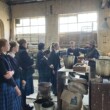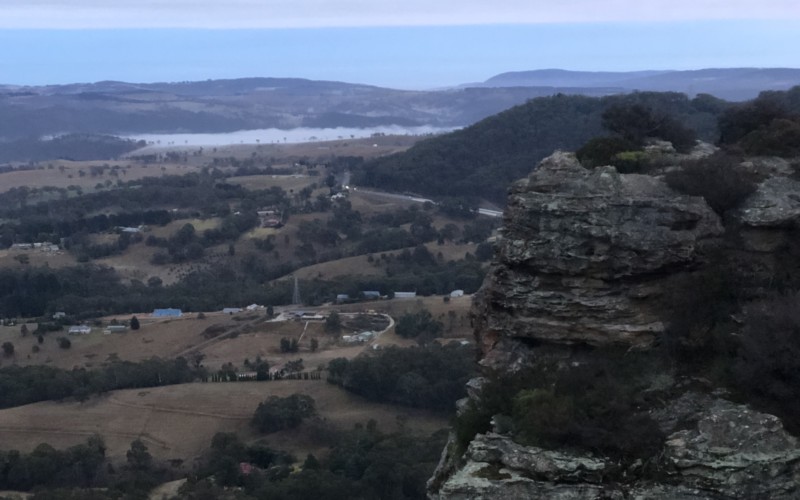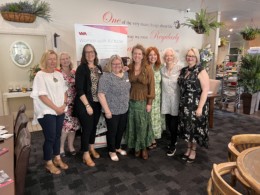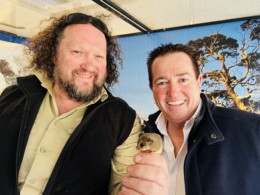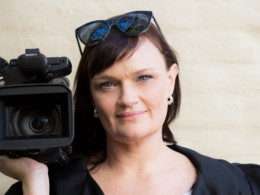In writing this, I wondered about the title that was most apt. Would it be “Lithgow – the town that says, we can do this” or “Lithgow – the town that says no”. Let me explain.
In terms of its future, Lithgow is at a cross-road. The industries that defined us and made us strong in the past cannot be relied upon into the future. Coal mining and coal powered electricity generation are losing ground as the supply of renewable energy continues to be expanded.
I am uncertain of how long we have to shift our economy beyond mining and power generation. Certainly we all hope that the Mt Piper power station runs until 2040 as Energy Australia are publicly reporting. Experts tell me, however that we (Lithgow as a city working with the private sector and governments at the national and state levels) should have started years ago. This is an acknowledgement of how difficult it is to fund and build the necessary infrastructure, attract investment, develop jobs and skill local workers to create a city of the future out of a city of the past.
Other cities are facing similar challenges to Lithgow. These other cities have the same choice as us. They can say no to change, believing their past makes them safe for the future. Or, they can instead say – we can do this, we are ready for the future. Those that have formed the view that they did not need to change or weren’t prepared to change are today sad, lonely, hollow places. They are places which people and business are racing away from. I know from our recent community surveys which teased out jobs, jobs and jobs as the main priority that this is not the Lithgow that the community wants.
My vision for Lithgow in the future is of a city that is rich with jobs and a place of attraction, perhaps akin to Geelong or Newcastle today. Both of these cities were traumatised by the decline of their traditional industries – car manufacturing and steel production respectively. Today however, they are places that people and business are racing to invest and reside in. They are liveable and they are loveable. These cities, which are cities of the future, didn’t achieve this alone. The “secret sauce” was their style and culture. Above all else, the community and the Council on their behalf found ways to work constructively with governments and the private sector as well as institutions like universities. They said yes to fresh approaches to transitioning their city to be ready for the future, before shutting the door on opportunity by saying no.
It seems to me that the contest of styles that I outline above is being played out in Lithgow today. This has been sparked by this Council recently giving very qualified support to Lithgow being scheduled in a NSW Government policy relating to what is called energy from waste. Some in the community are questioning this decision and have cemented their position of opposition. I respectfully encourage those people to hear, consider and weigh up the arguments, both for and against, as the Council did in taking its decision.
The Council’s decision relied on advice from its staff who had the benefit of receiving detailed briefings about the safeguards that will be applied to energy from waste developments should they be proposed in the future. The Chief Scientist for NSW describes these health and environmental safeguards as international best practice. While the Council took some comfort in this advice, it remains an absolute in Council’s position that any proponent for an energy from waste facility will need to guarantee, through an environmental impact statement process, that all health and environmental risks are managed. This is not negotiable.
Relying on the above safeguards allowed the Council to then contemplate if, indeed, energy from waste may be just one of the means through which to not just start, but vastly accelerate transitioning of the local economy.
A concept for the former Wallerawang power station site has been revealed to the Council and the community. Energy from waste is just one part of this proposal, which has a much grander intention. The overall proposal is best described as a circular economy and sustainable energy business precinct. It would involve an investment of more than $1.5 billion, at least 1,500 jobs during construction across various projects and close to 800 long term jobs. Many of these jobs are in new industries that will exist well into the future. They include a big battery, advanced manufacturing, protected cropping, logistics and intermodal (rail and road) activities, the potential for hydrogen production and a hydrogen refuelling facility for major rail services, education and tourism. This ambitious and exciting project is assisted by energy from waste attracting the funding and providing the power required to support these other activities. There is also the potential for many more long term local jobs in other businesses that will be needed to support these activities.
The assurances from the Chief Scientist and the job opportunities that I describe above were persuasive. But the Council also believed that other “protections” would still be necessary for the community. For this reason, Council’s position is that waste should be substantially brought to the site by rail to avoid the impacts of heavy trucks. Also, as hosts for this activity the local community is reasonably entitled to a long term program of funding for local infrastructure, local economic development, carbon offset programs and city marketing. There are many such precedents across NSW where local communities are benefitting in a very material way from royalties and developer contribution schemes.
In this matter, it would have been easy to say no and close the door on opportunity. It is not a pattern of behaviour that this Council will take because that has the real risk of our city becoming a hollow place. I fully appreciate that a worker in a mine or a power station is not a single unit. If they are lost to this city, they take their close and extended family with them. Childcare, education, medical and sporting bodies are diminished in the process. We become less of a community.
The Council’s decision is powerful because it projects the message that we are a city that will be active in shaping its future. Provided all impacts are managed, this Council under my leadership will be open-minded about investment and jobs opportunities because these will be needed if this city is to navigate a challenging future and thrive – as a resilient and strong community.
As you will interpret from the above, I favour titling this opinion piece “Lithgow – the town that says, WE CAN DO THIS”.
Lithgow City Council Mayor, Councillor Maree Statham



